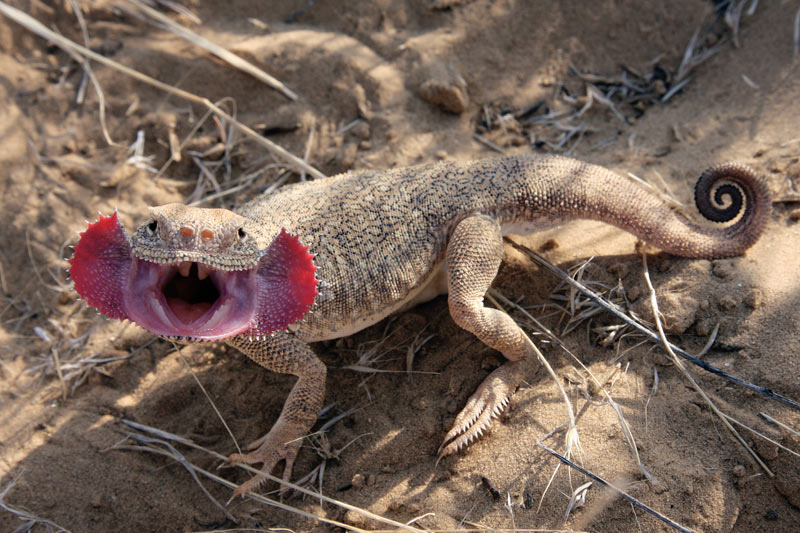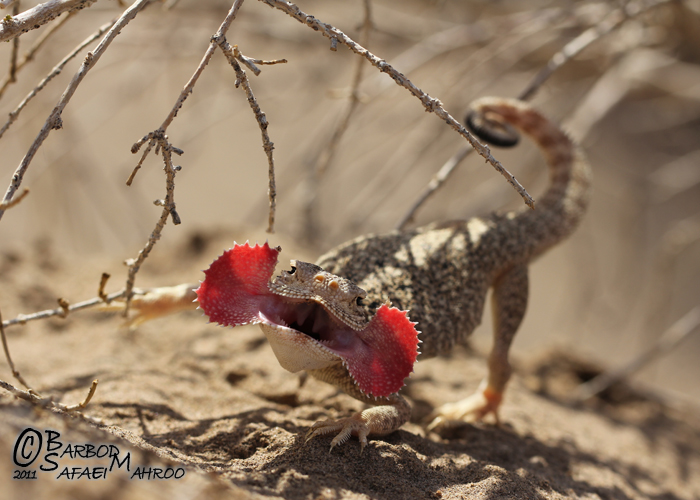 |
| ...? |
The family of reptiles creates a balance of colour, diversity, and oddity with every species. For many of them, beauty and weirdness go hand and hand, and you get animals like the Panther Chameleon- with their vibrant neon colours and bizarre bodily adaptations. But for a few reptiles, nature ran clean out of ideas and resorted to scrapping up some old ideas for a Sci-Fy story that were abandoned because they were far too absurd. Thus, the Toadhead Agamas were brought out into existence.
 |
| They got the "Try to make yourself look like a caricature of a regular lizard" aspect of life down. |
With their rounded snouts, freaky alien eyes, and stocky builds, there is no being in the known universe that would label these lizards as ordinary. Toadhead agamas belong to the genus Phrynocephalus, which contains over 40 different species all belonging to the Agamid family. They range across the Middle East with many species scattered across Afghanistan. Being a fairly understudied, not much is known about their ecology.
Toadheads dwell mostly on rocks and sandy outcrops. They possess large scales across along their giant alien eyeballs that prevent sand from getting in. Their body scales vary in colour, usually in the range of a light beige to a mottled red. They are however able to change the body colour to match their surroundings (almost entirely unlike the Chameleon which primarily changes it's colour according to it's mood). Toadheads also have no external ear openings on their head and broad connected teeth inside their mouth. Golly, how could the wacky little toadhead agamas get any weirder? If only they had spiky pink somethings that shot out from the sides of their mouth.
 |
| *womanly shriek of terror* |
As it seems, they do indeed have spiky pink somethings that shoot out from the sides of their mouths. These spiky pink somethings are called labial flaps - flaps of skin that extent out from the upper jaw and overlap the lower. When threatened, the lizard will blare open its mouth to display the labial flaps and hiss. The positive upshot of this is that their entire head looks like a petunia that grew an angry face. Only one species of toadhead possesses this trait, and it known as the Secret Toadhead Agama (Phrynocephalus mystaceus). The flaps are most often used against rival lizards and also as a defense mechanism. Useful this is, because generally the last thing any predator expects from a small lizard is for it's face to quite suddenly explode into a flurry of pink.
 |
| Oh knock it off you little freak. |
Another slightly less exiting and much less pink behavior of the toadheads is their ability to curve their tails in different directions. They do this to make themselves look bigger and somehow more frightening, but also just to get around faster. In times when there is too much heat radiating off the sand for them to feel comfortable, the toadhead will use it's tail as a prop and balance high on their legs. The tip of a toadhead tail is rounded and looks like it's been dipped in black ink. When the tail is curved, a bold stripe pattern is sometimes displayed going from their tails up to their torso. One of the other less-than-ordinary behaviors of the toadheads is their tendency to vibrate their body fast enough that they bury themselves in the sand, in a similar way that stingrays do. Except it involves 99.9% less water and 100% less sharks.
Toadhead agamas are known for having some of the most comical and ridiculous behaviors of any reptile. For a lizard that sees turning it's face into a flower as a terrifying threat display, it comes as no surprise that they are so pugnacious. You could learn a thing or two from these guys as well. If ever you feel stressed or threatened by an adversary, just expand your spiky pink labial flaps and hiss your brains out. Try curling your tail in weird swirly directions too. And if all else fails, wiggle around in a side-to-side motion until you've submerged yourself into the earth. You might just disturb them into submission.
 |
| The amount of smugness in that face is beyond measure. Photo by Damien Egan. |
Sources:
en.wikipedia.org
www.arkive.org
www.anapsid.org

No comments:
Post a Comment